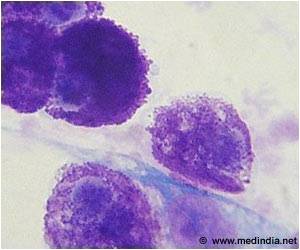A newly developed way to embed light-responsive switches into proteins can enable researchers to use lasers to manipulate protein activity within living cells.

TOP INSIGHT
A newly developed optogenetic tool enables researchers to use lasers to manipulate protein movement and activity within living cells and animals.
"By the time you get your hands on a knockout mouse for a particular gene or protein, the cells that had that protein have already adapted to their new circumstances of having one of its genes taken away; everything has changed," said senior author Brian Kuhlman, professor of biochemistry and biophysics. "By using light, we can inactivate a protein instantaneously. We can do it in a specific type of cell, at a specific moment in development. This can give us the resolution we need to truly understand the function of a particular protein."
Typically, when scientists want to learn about a biological system (a cell, organ, or animal), they make a change and then observe what happens. In biology, this is often accomplished by 'knocking out' or deleting a specific gene. For instance, a researcher interested in whether a protein is important in cancer might remove the gene for that protein, and look to see how it affects tumor formation. One of the problems with this method is that it creates a permanent change, and therefore the biological system has a chance to compensate before anyone can study it.
Kuhlman and his colleagues wanted to develop a strategy that would allow scientists to rapidly activate (or inactivate) a protein with the pinpoint precision of lasers. The approach is part of a growing discipline called optogenetics, where beams of light can act like the strings of a puppeteer to direct activities within cells. In this study, the researchers decided to use optogenetics to control the activity of proteins by controlling their location.
They started with a plant protein called AsLOV2 that changes its shape in response to light. The researchers attached a short amino acid sequence to the protein AsLOV2; this sequence postmarked the protein for the cytoplasm. In the dark, this nuclear export signal remained locked tightly in its 'photocage'. But when it was bathed in blue light, it was released and sent proteins out of the nucleus.
Yumerefendi then embedded these light switches into two proteins called LexA and Bre1 that act on DNA and thus normally reside in the nucleus. In both cases, he found that the proteins traveled into the cytoplasm after photoactivation. What's more, he showed that this move was accompanied by a loss in protein activity. Yumerefendi and his colleagues were surprised to learn that the cells adapted quickly to their new normal. For example, they found that the chemical tags that Bre1 sticks onto DNA disappeared in a matter of minutes when Bre1 was removed with light.
Proteins can play different roles at different stages of development, in different parts of an organism, and during various disease states. Therefore, the researchers are planning to apply their new optogenetic tool to study the function of different proteins and examine how the 'behavior' of these proteins changes depending on both time and space.
Source-Newswise
 MEDINDIA
MEDINDIA




 Email
Email






